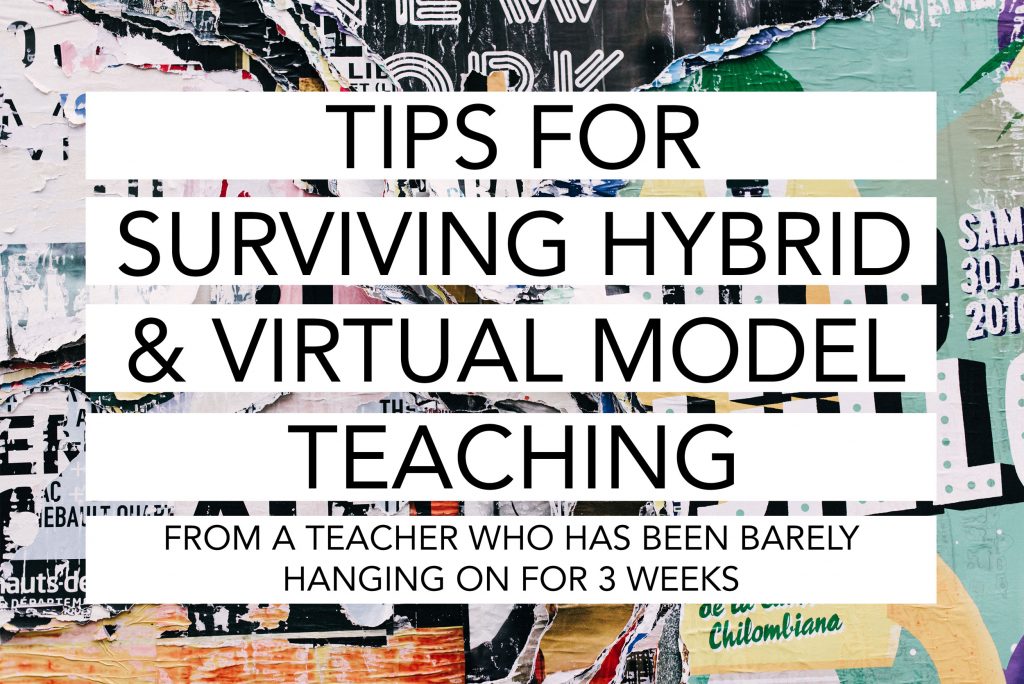
THREE WEEKS IN HYBRID
I have to start this post with a disclaimer: my first two and a half weeks of school has been a lot of putting out fires, just barely hanging on, and feeling a bit like a failure. But, as I rounded the corner into week three of teaching in hybrid, I suddenly felt like my feet were on the ground. For the first time, I had a handle on my schedule, what projects were going on, and I felt more confident dealing with the technology component.
Below are eight tips that I have jotted down as I moved through the dumpster fire that is the start of the school year, pandemic style.
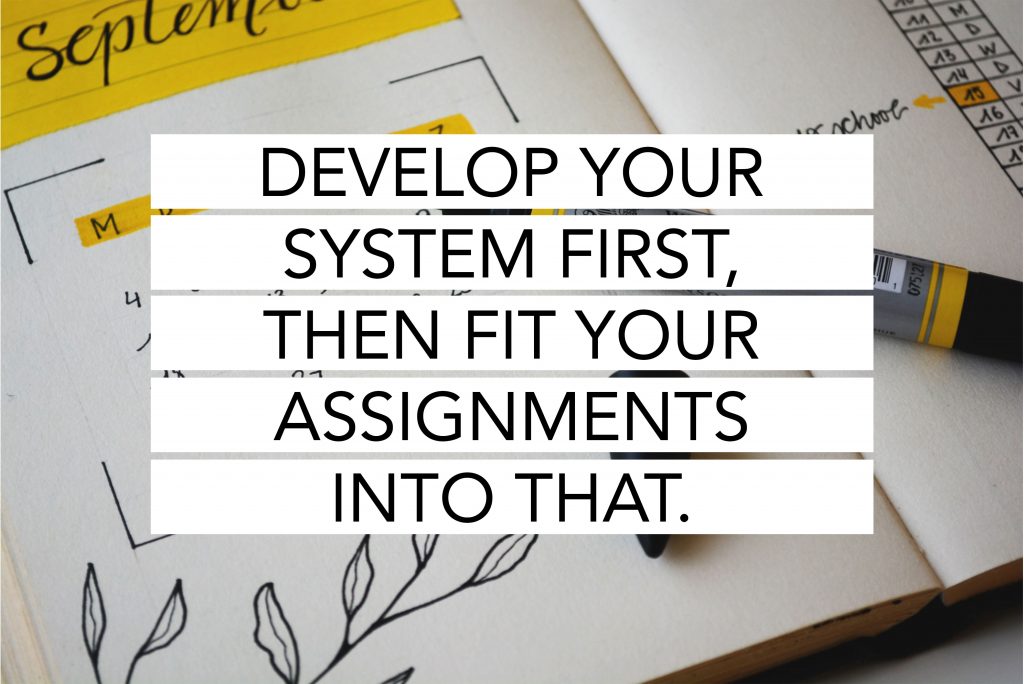
PLANNING YOUR YEAR
If you are anything like me you love to plan out your entire semester, maybe even the year, in August. I love filling out my planner with when I aim to start projects and my project progression. This year, throw all your past schedules in the trash (not literally, since COVID is temporary you may want to reference those again in the future).
Figure out what your school’s plan is. Are you full virtual? For how long? Are you hybrid? Do the students switch off every other day? What does the daily/weekly schedule look like? Using this information, create your own schedule. Figure out what projects can be completed with low materials and decide which projects are most important for your art program.
In addition to roughing out the first few weeks, consider what happens at the end of a project. How are students submitting work to you? Set up your organization system NOW so students can learn it from day one. In the spring, I had students email me pictures of projects when they turned them in to be graded. That system was a hot mess. If I had to follow up with a student, or track down a project for grading, I was forced to dig through my e-mail.
This year, my school is set up through Teams and Blackbaud. I have chosen to train my students to access project information and submit work through Teams. Within our Teams group, each student has a folder with their last name. Every new project they create a subfolder with the project name, where they upload their artist research sheets, critique sheets, and pictures of their work. I know exactly where to track down their work, no questions asked.
Rough out your first few weeks of school. If you are in hybrid mode, count the number of days a project would typically take and apply those to how often you will see a student in person. When I realized I would be a hybrid teacher I opted for my students to work on one assignment at school and one assignment at home to prevent projects from traveling back and forth daily. This leads me to…

MANAGING SUPPLIES
Many teachers around the world are finding themselves in a situation where students can no longer share supplies. Art kits are being put together for at home and at school use, art suppliers are running low on watercolor and drawing supplies. As a hybrid teacher, I had to create art kits to allow my students to work on projects at home. However, I quickly realized this system would not function well if my students where lugging supplies and projects back and forth from school and home every day. Inevitably, things would get lost, projects would be left in the wrong place, and students would be left with nothing to do.
To avoid that situation, I decided to have a project for in-class, and a project for at home, running simultaneously. This presents its own set of challenges. For one, my students will be working on projects at home that I can’t offer the same amount of guidance as I would at school. Also, there are times I present a project to the entire class, both in person and on Zoom, but if the students are at home they won’t apply that information until the next time they are physically present at school. It was also very confusing at the start of the year when I had to present multiple projects a few days in a row, then split the students up to start working on assignments.
However, despite the challenges of juggling multiple things at once, I think it’s easier than trying to fill virtual student’s time with busy work or risking supplies traveling from location to location. My school does allow communal supplies in the classroom, as long as they can be disinfected between student use. For those who have to rely only on individual kits, traveling supplies may be inevitable.
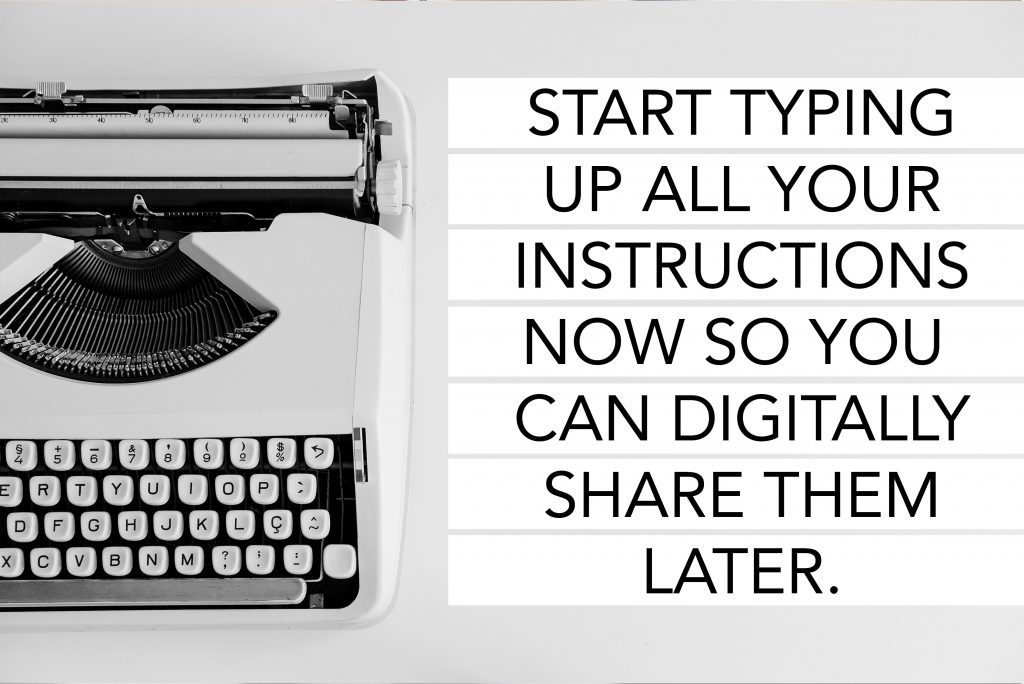
PLAN AHEAD
As soon as you determine which projects you are going to start the year with, start typing up your instructions. If you are in full virtual mode this is incredibly important for students to reference if needed. If you are in hybrid mode, this is a helpful tool if you are busy with one group of students and need the other group to start working independently.
When I say type up instructions, I mean type up every step, detail, everything you would verbally tell the students to do. If a student is late due to technical issues (inevitable) or misses a class, you can direct them to these instructions without having to interrupt the rest of the class.

Just like written instructions, demo videos are a huge time suck to create, but an invaluable asset when it’s done. If you are working on a project example now, stop! Set up a camera and record your process. These videos can be uploaded to a location students can access when they are working independently, if they miss class, or simply for a review of instructions.
It can be overwhelming to look at a year of projects and imagine recording demos for every single one. Instead, start small. Look at your first two weeks. Can you get the demo videos done for just your full virtual projects? If you take one bite at a time, eventually you will eat the whole virtual monster.
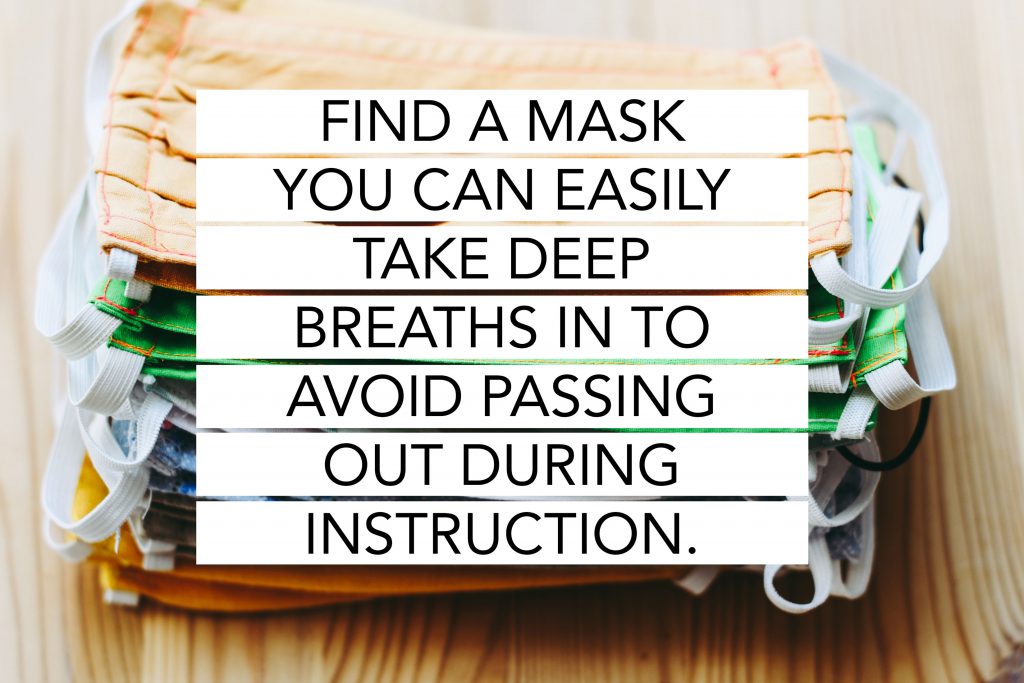
Before you even start your first day of school, go mask shopping. Order a few different styles from a few different companies. The most important parts of a mask are breathability, comfort, and safety. The mask is there to protect you and others, so make sure you have a quality mask that is actually doing its job. You will be wearing that sucker all day, so make sure it’s comfortable. I had headaches for two weeks solid, and I think a big part of that was adjusting to wearing a mask.
Finally, make sure you can easily take deep breaths in your mask. My nerves always kick into high gear on the first day of school. I talk a little faster, requiring bigger breaths between words. This year I had a particularly thick mask on the first day. When I took those nervous gulps of air the short moments between all of my informative words, I realized I wasn’t getting the level of oxygen I needed to not pass out in front of my class. I had to consciously take a moment to breathe, greatly slow down my talking, and a mask switch was necessary. I now have a thinner cotton one that allows me to talk more easily, while still protecting my health.
Also, wear your mask! Are you around people? Wear your mask! Are you six feet apart? Wear it just in case! Are you eating lunch solo or at a safe distance? Okay, fine, take off your mask.

CAFFINATE!
If you take nothing else away from the post, remember this one. DRINK YOUR COFFEE BEFORE SCHOOL STARTS. I made the mistake the first few days of lightly sipping on my coffee en route to school, answering a few e-mails, and then realizing my class was on their way. Once your mask goes on and class starts, sneaking those gulps of coffee is nearly impossible. I have days where my planning doesn’t hit until after lunch, and coffee that has been sitting around that long just isn’t worth the effort to drink it.
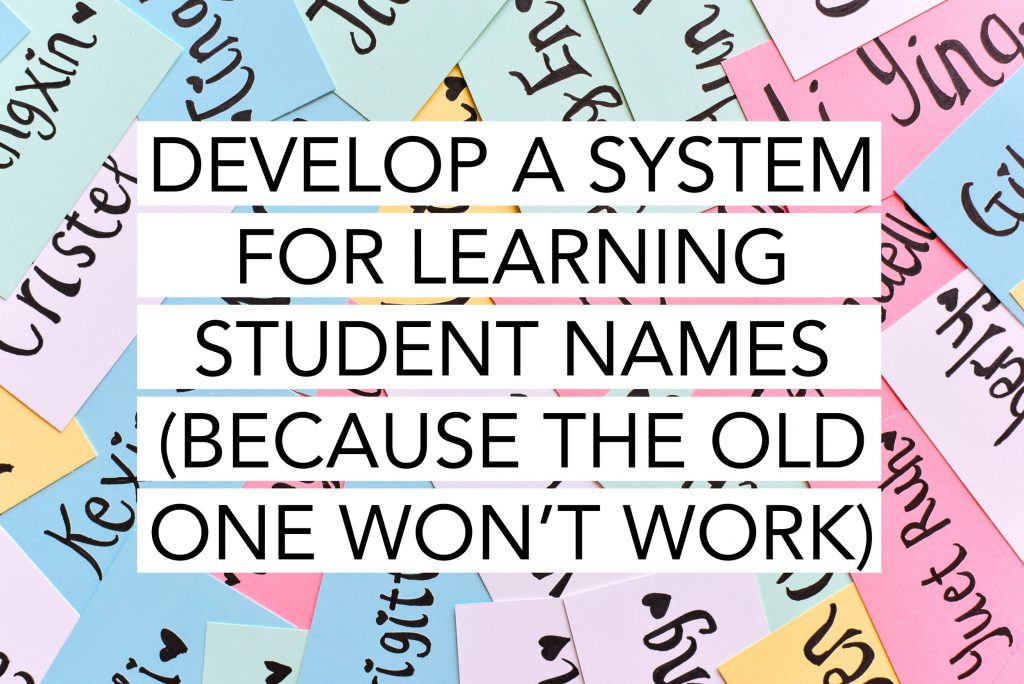
STUDENT NAMES
Now that you have a plan, are caffeinated, and masked up it’s time to start your year! Learning student names this year is nearly impossible!! If you are hybrid or full-on seeing kids in person, you are likely only seeing their eyes. If you are virtual, you are probably only seeing their forehead. Typically, in week three of school, I have a handle on 95% of student names. This year, I am still figuring it out.
The biggest help has been assigned seating, required at my school for contact tracing. I can easily refer to my seating chart to see who is sitting where. Also, when students are on our Zoom call I see their names on their screens. To help further solidify the name/face connection I also have a roster printed out with their picture next to their name. Find a way to get that name/face connection made to help you more easily connect to the students in a time when we can’t be closer than six feet.
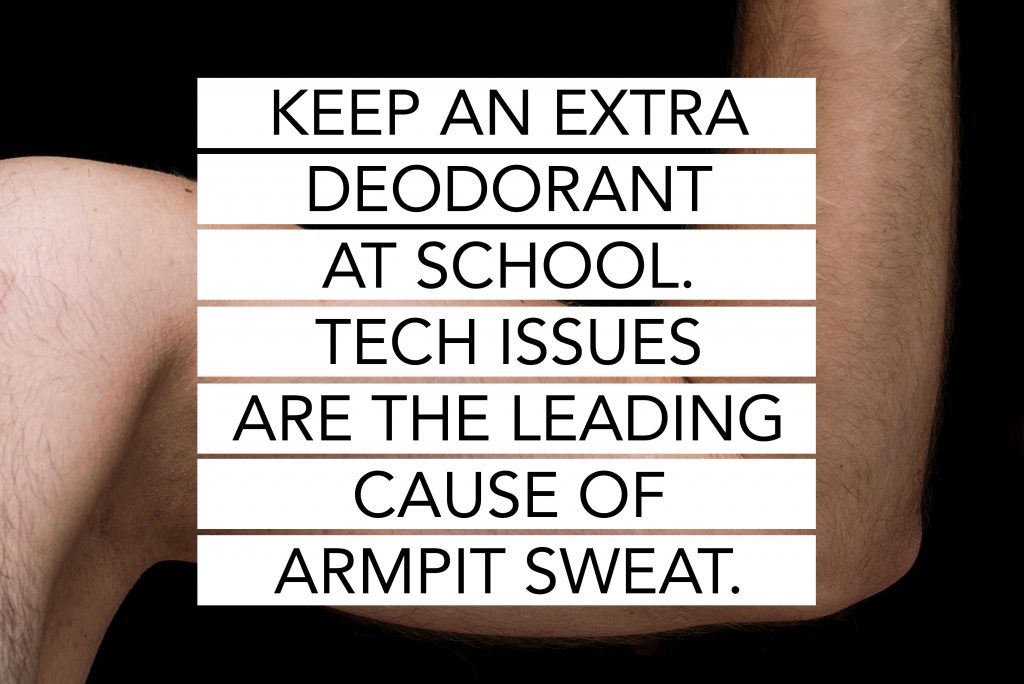
TECH SWEAT
If I can promise one thing about this school year it is that you will be sweating… a lot… Technical issues will come up. On my third day, I got the blue screen of death in the middle of class. By the time I rejoined my Zoom call, the call had defaulted to a student and I couldn’t figure out how to regain control in order to share my presentation. Class ended early that day and I felt like I needed a shower afterward. I haven’t faced tech issues to that extent again, but at least I have a sense of control with my spare deodorant safely stowed in my desk drawer.
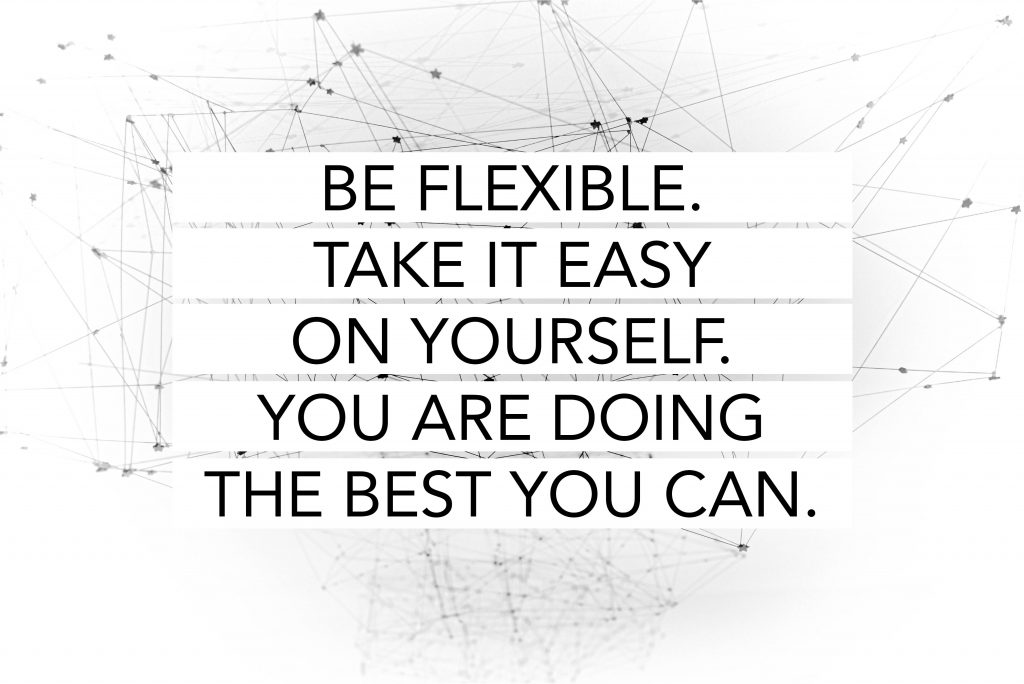
GOOD LUCK!
If I am being totally honest my mantra my first week of school was if I am just physically showing up every day, I am doing a good job. My expectations were very low, but as I have gained confidence in this new world of education, that bar is slowly starting to rise. It is going to be hard. You are going to be tired. You will feel like a failure. Tech will fail you. But, there is a light at the end of the tunnel. You will hit a point where you feel like you have a small handle on the situation. In a global pandemic, as essential workers, as a small lifeline of normalcy to the students we teach, we are doing a great job every day just by showing up.
Thanks for stopping by! Don’t forget to subscribe to my blog or check my out on social media for more life experiences, project ideas, and art teacher nuggets. You can also cut out the typing up instructions and recording video demo by checking out art projects and resources on my blog here and here as well as on my TPT here.

0 Comments